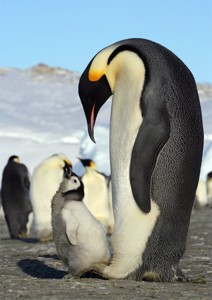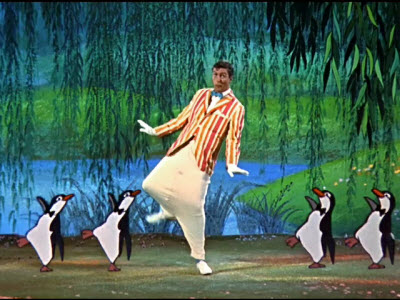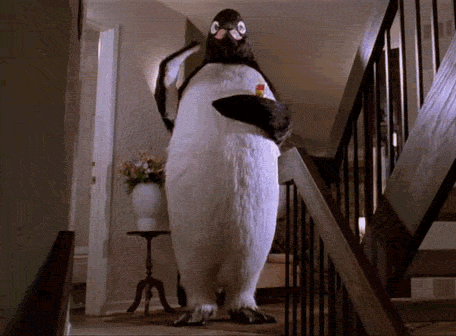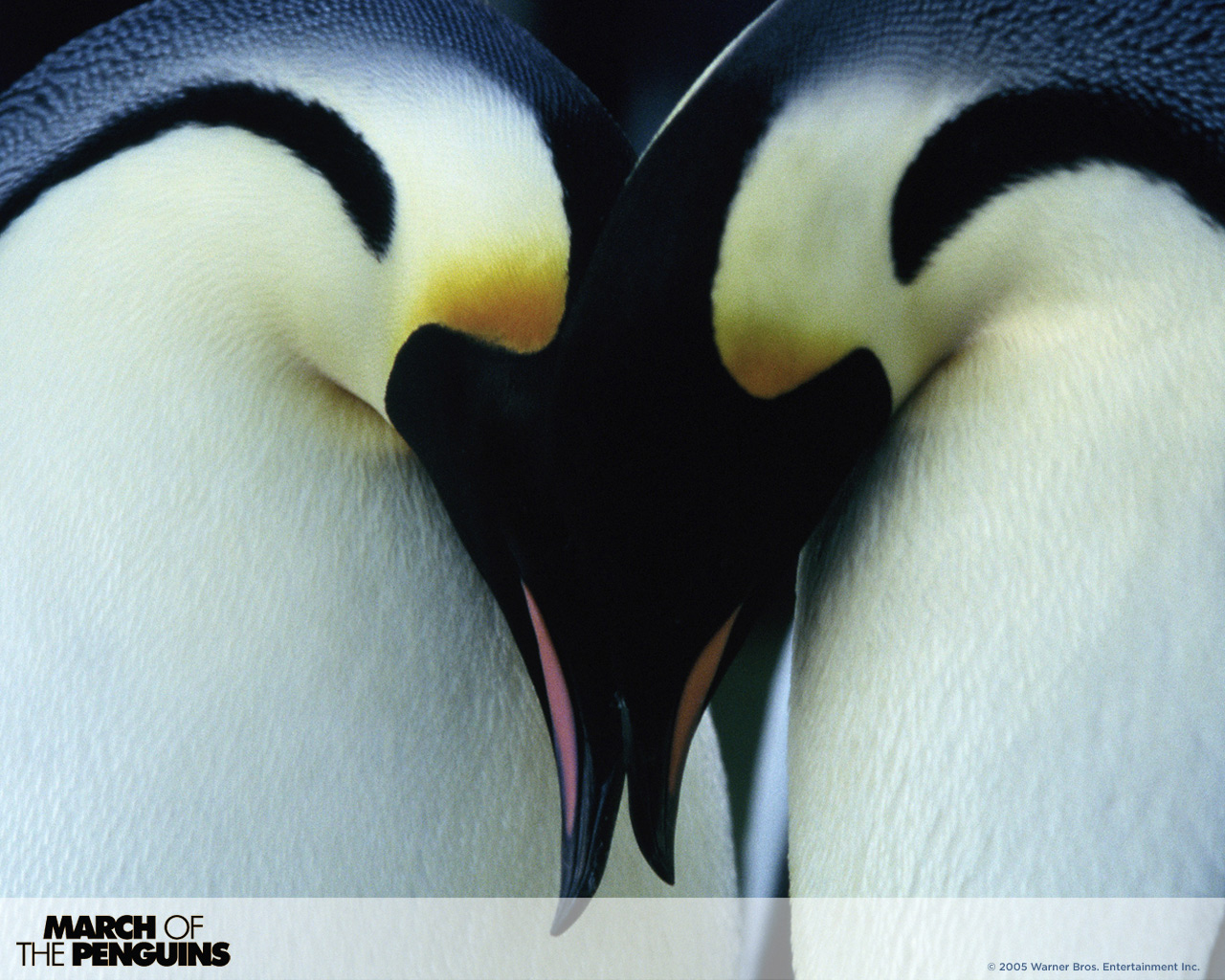10 Reasons Penguin Movies are Popular
What’s with all the dang penguins?
We’ve known that for decades that Hollywood has a habit of supplying vocal chords or curiously anthropomorphic abilities to all living creatures in the animal kingdom. From animated features to “Dr. Doolittle,” we’ve consistently fantasized about what would happen if our furry, scaly or feathered friends could talk, sing or interact with us in amusing ways. In particular, it seems in the last 10 years that we’ve been getting a heavier dose of our neighbors to the deep (deep) South.
Whereas most times a bevy of different critters populate a single movie to represent one particular climate or geographical region, the rare single-species spotlight has belonged to penguins. The Oscar-winning film “Happy Feet,” for example: entirely about penguins. Even the mischievous penguins of DreamWorks’ “Madagascar” have received their own straight-to-DVD specials and short films … not that anyone’s paying attention.
Oh, and penguins collectively haven’t only won one Oscar, but two. The 2005 documentary “March of the Penguins” showed how we could watch over an hour of penguins being penguins — not even talking or dancing — and call it worthy of film’s most prestigious prize. If that weren’t enough, the penguins of that film also marched to the golden voice of Morgan Freeman, the most coveted narrator on the entire planet and what will likely be all time.
How does a flightless bird manage all that? I must admit that even I’m guilty of unadulterated penguin love. I could stare at the penguins crammed into that glass box at the Lincoln Park Zoo for hours. I was there last month, in fact, and watched one of the penguins deliver a speech to the other penguins from what looked like the penguin equivalent of Pride Rock — I swear.
With all that in mind, Jim Carrey’s new family comedy “Mr. Popper’s Penguins,” based on the popular book written in 1938 (they even withstand the test of time), clearly marks another point on the lengthy timeline of penguin cinema history. In an effort to explain the logic behind this rich tradition, I’ve assembled 10 reasons why penguins have found so much love in Hollywood and why they’re so darn cute popular.
—
10. They stand and walk using two legs
It sounds simple, but not many of our earth’s inhabitants rock two legs and stand upright. Even our evolutionary predecessors (I suppose I should say if you believe in that kind of thing) in the ape genus use their knuckles to get around. This structural similarity allows us to project more human characteristics onto penguins and we subconsciously identify with them more as a result. Sadly, while they can walk similar to us, we cannot toboggan on our bellies like the world is a giant slip ‘n slide.
9. They can’t fly
Pity. Our human capacity to feel bad for things such as animals has led to both PETA and our intrinsic love of penguins. To be classified as a bird yet not possess the ability to fly is like being classified a movie-lover when you were born without vision. Cruel and unusual. The fact that penguins only have a few inches on the dodo bird — which need I remind you is extinct — yet would get smoked in a race with an ostrich is enough to move any audience to tears, story and plot aside.
—
 8. The males watch the eggs and babies
8. The males watch the eggs and babies
Social and behavioral scientists have always found proof negating societal norms by studying penguins. They actually provided one of biggest talking points for the fact that homosexuality is not a “chosen” lifestyle when two male penguins were observed “mating” or something. Anyway, back to the egg thing. What woman wouldn’t love the chance to say to her husband, “well penguin fathers watch their eggs, why don’t you get up and take care of the baby for once!” As we saw in “Happy Feet,” the dads chill out with the baby egg lodged between its feet and groin. And while that does leave the men a chance to complain about their mates together, it’s not exactly the most manly of images; that silliness makes for great Hollywood fodder.
—
7. They waddle
God blessed God’s creatures with many gifts, but reserved especially for the penguin was the gift of waddling. Given long toes and stumpy legs, the penguin uses this gift with grace — and much to the amusement of all other creatures in the animal kingdom. If that weren’t enough, just the word “waddle” delights the senses. The words “walk,” “crawl,” “fly” and “swim” have nothing on “waddle,” even combined.
—
6. They always looked dressed up
Ever heard of an event where the dress code was “penguin?” That’s because penguins always look sharp. Just look at Disney’s “Mary Poppins,” for example. Dick Van Dyke stuck a bow tie on his penguin friends and suddenly they were the classiest gents in the room — or animated carousel world place. Something has be said for classiness and the penguin has it, so long as it doesn’t have a fish dangling from its beak.
5. There are so many different kinds
From kings and emperors to chinstrap, macaroni and rockhopper penguins, many different genuses exist within the penguin family, which means many opportunities for a cast of goofy characters. The crested penguins, for example, like Cody from “Surf’s Up,” give off their own kind of goofy vibe, whereas emperors could be the responsible ones. Variations also help distinguish characters when a story focuses entirely on one specific kind of animal. Wikipedia cites 23 types of penguins. Plenty to choose from there.
4. They live in Antarctica
Only the penguin has the figurative balls to live on the South Pole. With the exception of a furred seal, a couple cold-water fish and some other insignificant birds, there’s just a few seasonally populated research stations down there where the occasional lost husky or shape-shifting alien turns up. Even Santa Clause chose the other Pole, which is saying something. Fearlessness aside, all animation studios looking for a new climate to digitally recreate in hopes of wowing the Academy every winter have had to at one point consider the merits of a frozen tundra, and by default their subjects would be penguins. Welcome to the land of the ice and snow, Led Zeppelin — don’t forget your parka.
—
3. They’re tubby
Any stand-up comedian or kung-fu-fighting panda will tell you fat is funny. Penguins also aren’t fat so much as stocky and oddly shaped, and this fatness ambiguity only adds to their appeal. When you consider #8 on the list in relation to this point as well, you double the fun. If only all things that were fat waddled. Being a top-heavy animal with short legs was either a cruel joke from Mother Nature or pure genius. I’d argue a combination of both.
2. They’re called penguins
Where did the “w” sound come from anyway? That insanely hard first syllable in tandem with the “gw” gets me every time. It also practically built Adam Sandler’s career by permitting the comedian to use it in the film “Billy Madison.” (My apologies for the creepy image — couldn’t resist. ) The word is so treasured, in fact, that a dispute exists over its etymological origin. The French word pingouin refers to the “awk,” a bird with similar white and black markings, (merci, Wikipedia), but the English “penguin” seems unrelated. Most major dictionaries refer to the Welsh roots pen (head) and gwyn (white). There’s also the Latin pinguis, which means “fat.”
—
1. They’re monogamous
Hardcore animal fans or avid Zoobooks readers have probably scrutinized Disney, DreamWorks and other animated studios for portraying animals as being in love with each other to a happily ever after extent. Truth is, animals aren’t generally keen on waking up next to the same exact member of their species every day for the rest of their lives. Life, they realize, is too short. But not so with the penguin. The penguin, God bless it, affirms our cultural value that one should mate for life. By making a movie about penguins, studios can portray families with biologically lying to children. After all, animated movies have a responsibility to reinforce our societal beliefs and constructs to our children so that they don’t have to make up their own minds. Still, nothing warms the ice under one’s feet more than the idea that love exists as a force in nature, not exclusively in the minds of human beings.










1 Comment
Actually, most penguins are only monogamous for 1 breeding season. Then they find a new mate. Anyone can hook up with the same person for one year.